Faculty Staff Immersion Spring 2023
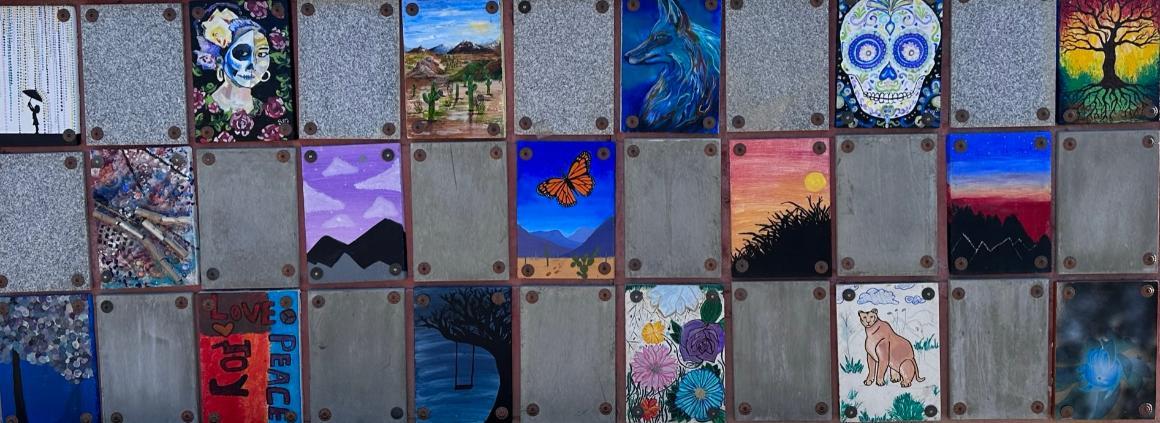
A Pilgrimage of Accompaniment
This past Spring Break, the Ignatian Center hosted an Immersion specifically for SCU faculty, SCU staff, and Ignatian Center Advisory Board Members to the US Mexico Border. Participants were hosted by the Kino Border Initiative (KBI), a binational organization located in Nogales, Arizona and Nogales, Sonora, Mexico. Through promotion of border and immigration policies which affirm one’s human dignity and solidarity, KBI seeks to accompany migrants through direct humanitarian assistance, social and pastoral education with communities on each side of the border, and engagement in research and advocacy to transform policies locally, regionally, and nationally.
In order to fully understand the realities of migration at the US Mexico border, participants were provided a variety of opportunities to learn about all aspects of the border immigration system, including:
- hiking through the desert to experience the terrain that people encounter as they migrate across the border
- meeting with ranchers who own land on the border
- talking with border patrol officers to hear their perspectives
- visiting the medical examiner office which attempt to give dignity to the human remains that are found in the desert
- visiting a cemetery where various remains are buried
Most importantly, participants spent nearly 3 full days serving meals, sharing in conversation with people who were migrating, and playing games with the children. A few of the participants shared their experiences and the impact they felt in learning about the challenges faced by all at the border.
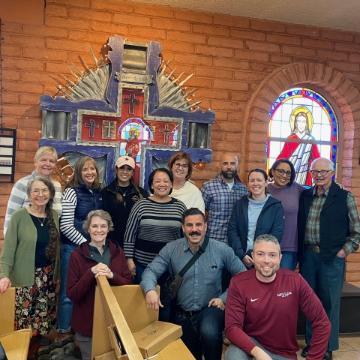
Betsy Slattery
Advisory Board Member, Ignatian Center
For me the most eye opening and heart touching experience was the opportunity to witness and interact with the many families that we met. Some families were staying at Kino’s shelter, others were there just to get a meal, or meet with a social worker, or wait to see a doctor. Kino provides so many services for so many displaced families - families with little children just trying to escape violence or turmoil in their country. Kino does so much to provide a human connection and one that says ‘we care about you and want the best for you.’
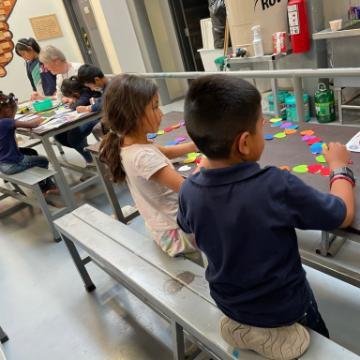
Jose Ortigas
Assistant Professor, Spanish Studies
One thing I was really struck by was the experience of children and how they live in migration. It’s one thing to experience it as a child, or to read the chronicles of children after they’ve grown up and written about their experience as child migrants, or to read the news or watch films about this condition. It’s quite another to be in the presence of these children and see them and talk to them about their dreams. As a child immigrant from Mexico myself, I was immediately drawn to them and their stories. I wanted to gain another perspective, to have first-hand knowledge of other people’s experiences, and to be there and see what they are going through right now. Because everybody’s story - whether they are migrants or not - is different. They’re so close to the border, it's a few minutes' walk, yet they’re so far from the outcome that they want. I felt rage at how arbitrary our system is. And why we let certain people in and not others. I think there are social factors that inform our migration system and there are economic factors that make our migration system the way it is. So, rage at that and the fact that we as a society exploit migrants. And our immigration policy is predicated on economic exploitation of really disadvantaged people who live precarious existence.
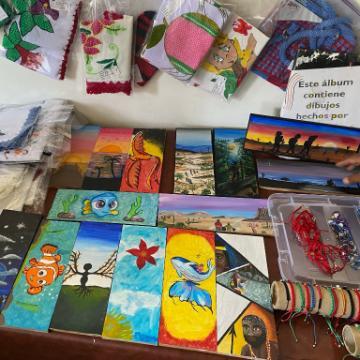
Mary McLane
Director of External Relations, Ignatian Center
This entire immersion experience was life changing, but meeting Erika, a teacher who had to flee Venezuela with her husband and two young sons, traveling by train, bus and foot for three months to reach the border at Nogales, had the greatest impact on me. I originally connected with her over a painting I watched her create of a family trekking across the desert, and we reconnected one afternoon at Kino. To hear her story first hand, to meet her family and see her resilience, strength and spirit in the face of so much adversity, has inspired me to tell her story as often as possible, and to seek out ways to work to fix the immigration system.
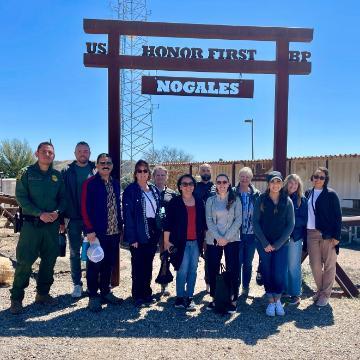
Tony Cortese
Director of Ignatian Spirituality, Ignatian Center
The most impactful part of the experience for me was the variety of perspectives we heard from the immersion. This deeply impacted me. Whether the person was someone migrating, a volunteer at a shelter, a Border Patrol officer, or a rancher who owns land on the border, one thing became clear to me: everyone is hurting from the broken and unjust immigration system. The immersion inspired me to make regular calls to my congressional representatives, reminding them about how much harm we are causing with our current policies.
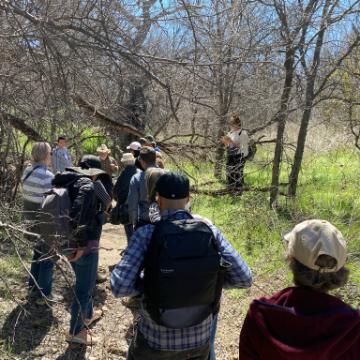
Patti Boitano ’71
Advisory Board Member, Ignatian Center
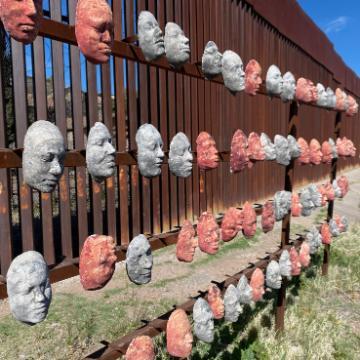
The second experience happened one afternoon, when our immersion group drove from Nogales, Arizona, to Tucson, Arizona and the office of the Pima County Medical Examiner, Dr Greg Hess, MD. The purpose of this journey was to learn what the medical examiner and the forensic anthropologist could tell us about the migrants who crossed the deserts of Mexico and Arizona, seeking safe passage to the United States. Over the past twenty years, 1700 bodies had been found in the desert area of Pima County...including women and children. Dr. Hess was relieved to report that over 65% of the bodies have been identified and returned to families. Dr. Hess and the Pima County forensic anthropologist both exhibited empathy and respect for the victims they serviced. While visiting the anthropologist, our group had the opportunity to honor a young man whose body had recently been discovered in the desert.
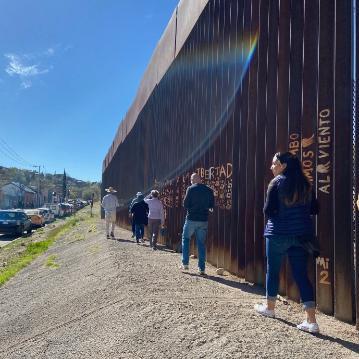
Shirley Mata
Director, Employee Development & Wellness
The immersion trip to the Kino Border Initiative was such a valuable and humbling experience. We talk about our Jesuit values and it's not until you are in action and walking with those at the margins that you truly begin to understand. Listening to the stories, interacting with all of those who are impacted by the activities at the border from the organizations that assist, to the border patrol agents, and the ranchers to the medical examiner, and of course, the migrants seeking refuge, it's all so complicated.
- Seeing the items that were left behind in the desert, especially the pictures and letters, really humanized their experience.
- I came in with my own biases and thoughts on who a rancher is based on what I've seen on the news. When you meet people, break bread, and hear their story, you can no longer see it as them vs us. It truly is complicated and makes you think.
- Talking with border patrol officers and understanding the tension between doing a dangerous job, and being compassionate.
- Visiting the medical examiner offices and seeing pictures and the remains of individuals who have not been reunited with their families is heartbreaking. Leaving for a "better" life and falling victim to the elements is unfair.
- Spending time with the migrating families and hearing the stories of the lives they left behind, was heartbreaking, and at the same time showed a lot of strength and hope. The kids are so resilient and playful. I am hopeful that they will be welcomed, and concerned that they may not.
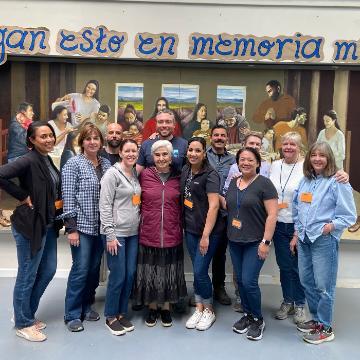
When you put a name to a face, and a handshake or hug to the complexities of the situation, what I thought was reality, is not. Since returning, I look at things through a different lens. I think about who is not at the table, who is being left out, and what we can do about it.
